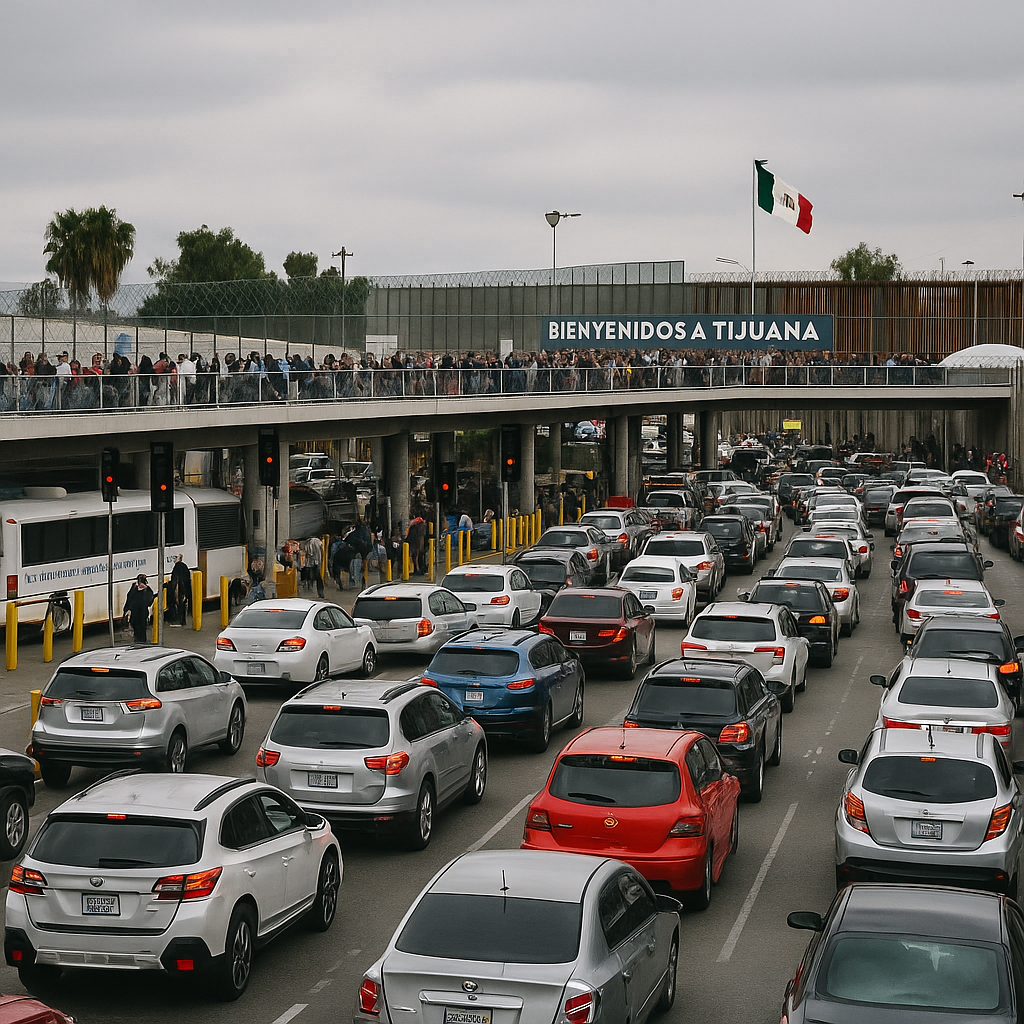
A FinancePick Deep Dive
1) Introduction – The Border as an Economic Laboratory
Border cities are more than just geographic peripheries—they are economic laboratories where the interplay of trade, migration, labor markets, and currency fluctuations can be observed in their rawest form.
Tijuana, sitting at the Mexico–U.S. border across from San Diego, provides an especially vivid case study. It is both a manufacturing hub and a cultural bridge, a city whose daily rhythms are directly shaped by the dollar–peso exchange rate.
2) Tijuana’s Economic Dual Identity
Tijuana’s economy is characterized by a dual structure:
- Export Manufacturing (Maquiladoras): Hundreds of factories assemble goods for U.S. markets, leveraging Mexico’s relatively lower labor costs.
- Cross-Border Consumption: Thousands of people cross the border daily for shopping, healthcare, and services—flows that are highly sensitive to currency fluctuations.
This dual identity means that Tijuana is simultaneously a producer in the global supply chain and a consumer linked to the U.S. economy.
3) The Peso-Dollar Dance
Exchange rates are not abstract numbers in Tijuana—they are daily realities.
- Strong Dollar: Benefits Mexican exports, as U.S. importers find goods cheaper. Local workers’ remittances from family in the U.S. also stretch further.
- Weak Dollar: Hurts cross-border shoppers, as Mexican consumers find it harder to afford U.S. goods and services.
- Volatility: Creates uncertainty for small businesses that operate on thin margins.
In essence, the peso-dollar exchange rate acts as an invisible tax or subsidy on every transaction in Tijuana.
4) Labor Markets and Wage Arbitrage
One of Tijuana’s biggest advantages—and challenges—is its labor force.
- Wage Arbitrage: A factory worker in Tijuana may earn $300–$400/month, compared to $3,000–$4,000/month for a similar role in San Diego.
- Cross-Border Workers: Many residents commute daily to higher-paying U.S. jobs, funneling dollars back into the local economy.
- Pressure Point: Exchange rate shifts can either amplify or erode this wage gap, changing migration flows and local wage expectations.
This makes Tijuana a real-time experiment in globalization, where wages, productivity, and exchange rates constantly interact.
5) Trade Flows and Supply Chain Resilience
Tijuana’s location makes it a critical node in North American trade.
- Electronics, automotive parts, and medical devices are produced in border factories and shipped north.
- A favorable exchange rate can make Tijuana a magnet for foreign investment, while volatility may prompt firms to rethink supply chain risks.
- The city demonstrates how currency risk is not just a financial market issue, but a strategic consideration in global manufacturing.

6) Consumer Behavior – The Everyday Economics of Currency
For Tijuana residents, the exchange rate directly shapes consumption:
- Shopping Patterns: When the peso is weak, more goods are purchased locally. When stronger, consumers flock to U.S. malls in San Diego.
- Healthcare and Education: Families may decide whether to seek U.S. services based on currency movements.
- Cultural Exchange: Even nightlife and entertainment industries are affected, with U.S. tourists adjusting their spending depending on relative purchasing power.
7) Policy and Macro Lessons
Tijuana’s story reveals broader truths about global trade and exchange rates:
- Exchange rates directly impact real economies—not just markets.
- Border cities are bellwethers for global trade tensions and currency volatility.
- Labor markets in border zones reflect globalization’s benefits and inequalities simultaneously.
- Policy coordination matters: Exchange rate stability fosters cross-border prosperity, while volatility disrupts households and businesses alike.
8) Journalist’s Conclusion – Borders as Economic Mirrors
Tijuana illustrates how borders are not lines on a map but economic mirrors: they reflect both the opportunities and tensions of globalization.
For investors and policymakers, the city is a reminder that exchange rates are lived realities—they shape where people shop, work, and invest.
In the broader narrative of global trade, Tijuana is not an outlier but a preview of what many interconnected economies face: a world where local lives are inseparable from currency markets and global supply chains.
